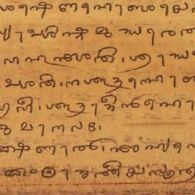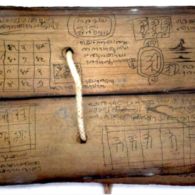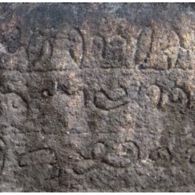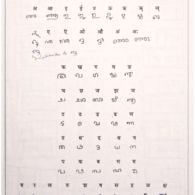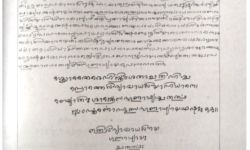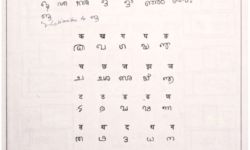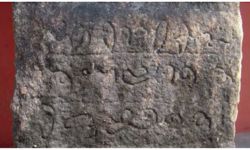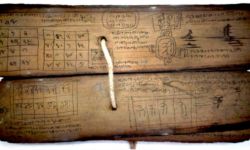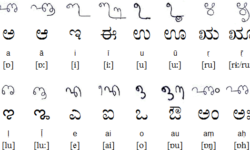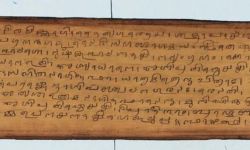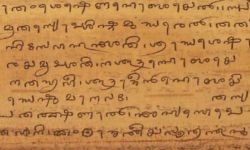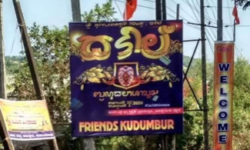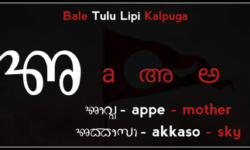Profile
The Tigalari script, also known nowadays as Tulu Lipi, or “the script for the Tulu language,” is in the unusual position of having been used to write one language, falling into almost complete disuse, and now being used to revive a different language.
For centuries, sacred Sanskrit documents, typically palm-leaf manuscripts, in southwest India were written in the Tigalari script. Indeed, in the Karataka/Kerala region it was mandated by religious leaders. With the advent of printing, though, Tigalari — which was exclusively a handwritten script — fell into disuse. Missionaries in the region used the Kannada script instead.
In the past twenty years, though, the Tigalari script has re-emerged wearing, as it were, a different hat — an endangered-language hat.
It’s an unfamiliar twist on a familiar situation—the importance of a culture having its own writing system as a symbol of its unique identity.
The Tulu people, or Tuluvas, are an ethnic community of southwest India, speakers of the Tulu language and inhabitants of Tulu Nadu or Tulunad, a region of southern Karnataka and northern Kerala.
When India achieved independence, the Tuluvas demanded national status for the Tulu language, and a state of their own. That demand has been growing steadily stronger in the past twenty years, and partly as a result, the Karnataka Tulu Sahitya Academy was founded in 1994 as a cultural wing of the Government of Karnataka. The Academy introduced the Tuḷu language and the Tigalari-Tulu script in schools across the Mangalore and Udupi districts.
The Academy’s mission statement says: “Never in the past the people of Tulunadu had unitedly waged a struggle for preserving and fostering Tulu, an important language belonging to the Dravidian family of languages. Tulunadu being an abode of many languages and cultures and due to lack of encouragement from the administrative system, and due to the blind fascination of people towards English, Tulu faced the danger of losing identity in its own land.”
Tigalari scholars are not altogether happy about an ancestral script being repurposed to write a different and traditionally oral language.
“I wouldn’t really consider Tigalari a script for Tulu language,” wrote one Tigalari typographer. “Tulu is largely an oral language. A beautiful oral language. The Tigalari script was used in the Tulu speaking regions to write large number of Sanskrit language books. There are very few (maybe 20) Tulu language/Tigalari script books as opposed to thousands of Tigalari-Sanskrit language books.”
Proponents of Tulu culture, though, are delighted they now have a script that can be seen as a visible manifestation of the Tulu language and identity. The Tulu script, they report, is becoming more popular day by day, and is used everywhere in Tulunad, including sign boards, marriage invitations, house names, flex boards, Tulu movies and signage.
“Though currently it may not be used extensively,” one wrote, “I could see a great future.”
6/1/5
88\\
You can help support our research, education and advocacy work. Please consider making a donation today.
Links
General Script, Language, and Culture Resources
- Omniglot
- Wikipedia
- Unicode (PDF)
- Tulu Wikipedia Tutorial
- Learn to Write Tulu Script Explained in Tulu
- Newly Born Tulu WIkipedia Article
- Tulu Language and Script Background
- Scriptsource
- TotalKannada Tulu Books
- Wikipedia Article in Tulu
- Tulu Academy Script Classes Article
- Online Tulu Lessons
Community Resources
- Beauty of Tulunad Facebook Group
- Tigalari Font Facebook
- TuluAcademy
- Tulu University (Twitter)
- Tulu Language (Twitter)
- Beauty of Tulunad (Twitter)
